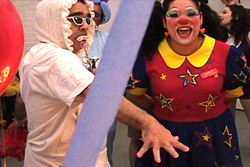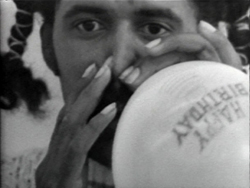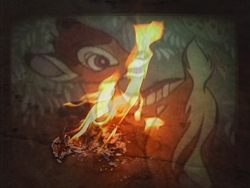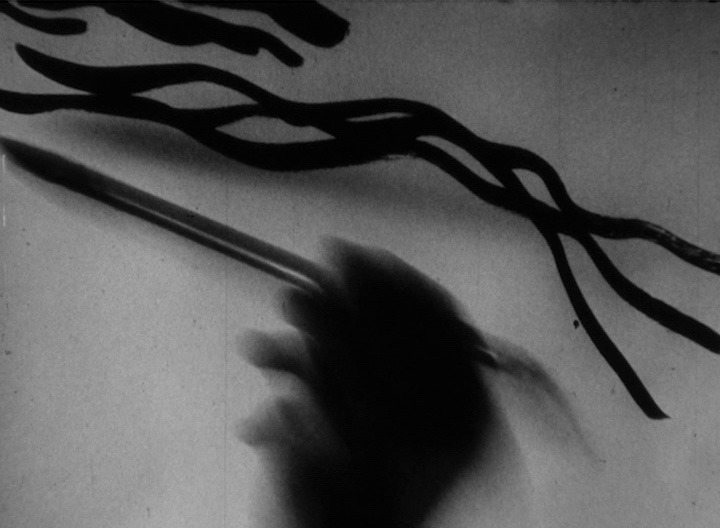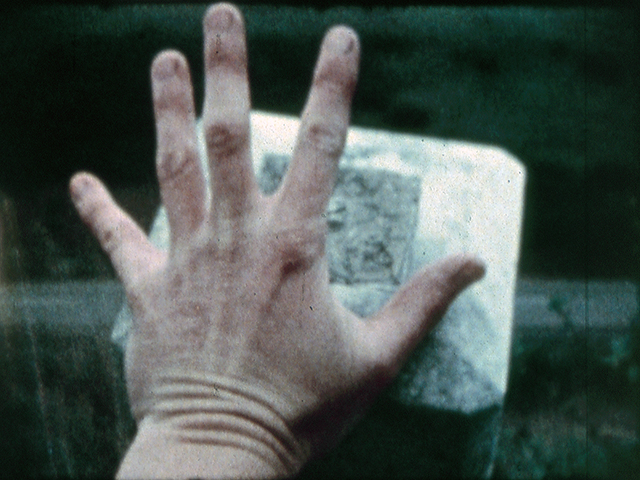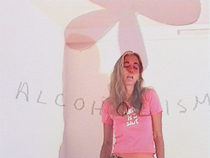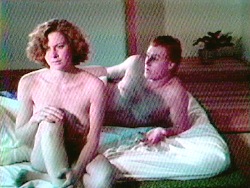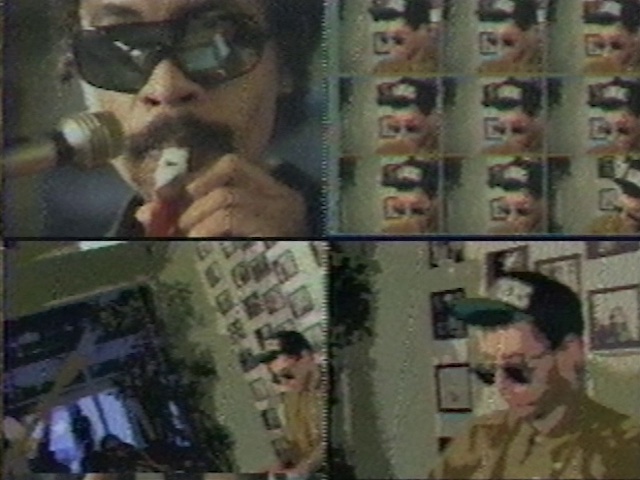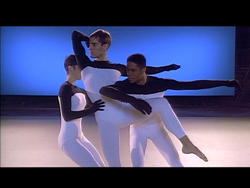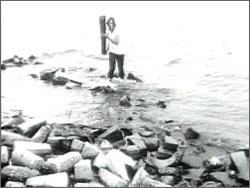Search Results
Search Results
Title Results
Your search returned 733 Titles
In June 2008, Michael Smith staged a birthday party for his legendary character Baby Ikki at EAI. Baby Ikki's Birthday Party documents this performance, following the diaper-clad baby as he interacts with party guests and an ebullient clown named Curly. During the party, cake was served, games were played, a piñata was broken, guests sang "Happy Birthday," and gifts were opened. There was even a puppy.
With a striking economy of means, Ramos enacts a close-up performance action: he blows up a balloon with his nostril until it bursts in his face. He then repeats this action with his other nostril. Alternating nostrils, he continues to blow up the balloon until it bursts. With each iteration his exhaustion visibly increases; he gasps for breath, almost to the point of passing out.
"In Bambi's Beastly Buddies, Bambi and skunk embody innocence, vulnerability and love. I lit Bambi on fire to a refrain from Beethoven's Ode to Joy, on the morning of May 11, 2004, when I read that Nick Berg, an American telecommunications contractor, was beheaded by Islamic militants on live video. I felt Bambi's incineration symbolized the times we live in." — Ellen Cantor
"With Bamboo Xerox, I found another strategy to move my audience and break illusions. I photographed bamboo (my favorite grass) from my backyard and then xeroxed both sections of living bamboo and the photographic stills of the bamboo. After editing the film, I had the entire six-minute film blueprinted as a black and white scroll. I stretched the scroll horizontally around the theater space so that the audience could see the film frame by frame before they saw the projection." — Barbara Hammer
Using a hand-held camera, Hammer initially shot on 8 mm stock. Her second film—created in 1968 while the artist was still married (her married name was Barbara Ward)—programmatically shows the desecration of a graveyard. Though only at the beginning of her development as an artist, she already disturbs the peace of the dead, confidently erecting a monument to herself amid them: "Barbara Ward Will Never Die." The young filmmaker stakes her claim to a place in history.
Barbie wants to be the perfect lover for Ken, but there is alcoholism and anger and the consequent violation of their actual love. Based on a text called Alcoholism: The Merry-Go-Round of Denial, Barbie struggles throughout to retain her innocence. Consequently, the style of the video is handmade and childlike. The songs in the video, by Willie Nelson and Julie London (which I lip-sync), become the interior dialogue between Barbie and Ken." — Ellen Cantor
This stylized narrative is the first in the Yonemotos' Soap Opera Series,in which they employ the traditional syntax and codes of melodrama to explore how mass media formulas manipulate desire and sexuality, fantasy and reality. Played out with the self-conscious acting and dialogue of a soap...
Bay Window is the complete documentation of an experimental event produced by Jenkins while an artist-in-residence at The Exploratorium in San Francisco in 1990. Transmitted live via videophone at multiple venues throughout California and Canada, the event centered the societal oppression faced by indigenous communities and their shared fight for ecological justice and self-determination.
Elliot Caplan's 35-mm film adaptation of Beach Birds, a dance work originally choreographed for the stage, begins with Merce Cunningham outlining his approach to dance for the camera, and thus his vision for how movement behaves and how we see it. He explains that the piece is choreography...
"The soundtrack begins with the artist stating the conditions: 'An artist may construct a work and/or a work may be fabricated and/or a work need not be built. I elected five possibilities for videotape.' One sees the artist come over the horizon at a rocky beach and throw a piece of wood. The...
